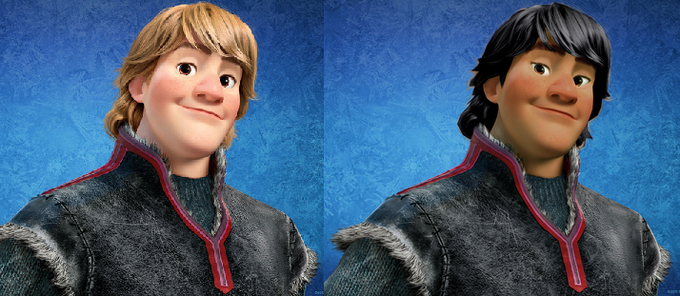A demerit to Frozen for portraying wolves as evil maneaters.
This led to a discussion of its racial characteristics:
One more demerit for showing Sammi as blond white people. Most are brown haired with facial features closer to Asians.
Laurel
Haven't seen the film. Had no idea it was supposed to feature any Sami characters. Geeeeeez.
But I did think along the same lines as Al. If it's a fantasy kingdom, why not model it on Russian or indigenous (Sami, Siberian) cultures? Why did it have to be white and blond?
Since the story involved European-style palaces, ships, and trolls, it might've been difficult to make Arendelle's culture indigenous. But even the traders and wedding guests were white, I believe. Couldn't Disney have made them a multicultural mix?
P.S. A few critics noted the movie's snow-white world. They wondered why Disney didn't take the opportunity to include some indigenous culture.
Others note same thing
Al shared this informative article:
Disney's Frozen Whitewashing Controversy
People who defend the movie have argued that since the setting is inspired by Scandinavia of the 1800s, it would not be appropriate to include people of color. Anti-Frozen bloggers answer this by stating that the movie is set in a fantasy world and as such could choose to have people of any color as main characters, and that it would not be impossible to find people of color in Europe two hundred years ago.
The character Kristoff is confirmed by co-director Jennifer Lee to be a member of the Scandinavian indigenous people Sámi. Many anti-Frozen bloggers have argued that the portrayal of Kristoff as blonde constitutes “whitewashing,” because they believe that the Sámi are a people of color. A proposed reimagining of Kristoff as “authentically Sámi” has spread on Tumblr.

The Sámi, though a people who have experienced and continue to face ethnic discrimination, would in fact pass as “white” in the United States, the country where this debate originated. Hence, the “Whitewashed Sámi” campaign has met some backlash and ridicule, as seen in the photo below.

In response to this, some of the anti-Frozen bloggers have insisted that the Sámi would have appeared Asian at the time when the movie was set, and that they only appear white today due to genetic mixing that has taken place since the 1800s. However, photographs of Sámi people from the 1800s tend to indicate that the Sámi of old had just as broad a variation in appearance as the Sámi of today.
Interesting. If the screenwriter says Kristoff is supposed to be Sámi but he's a white blond, that's a problem.
Also, I noticed the opening chant and thought it sounded non-Western. That was Sámi too--written by a Sámi composer.
Seems like Disney was making a feeble attempt to be inclusive, but failed. Oops.

I wouldn't mind if the movie included *a* blond Sámi among the others. But to make all the Sámi pale and blond, exactly like the other Nordic characters? No. That would be an excuse to justify whitewashing, not a legitimate portrayal of an indigenous group.
Note also that the Sámi tend to have colorful clothing. Really, it's not hard to portray an ethnic group in fiction. You give them different traits: faces and skin, clothing, language, customs, religion, etc. If an ethnic group is indistinguishable from the (white) mainstream, you may be guilty of whitewashing.

1 comment:
Back in 1957, the Russian studio Soyuzmultfilm made an animated film of The Snow Queen (a major influence on the Japanese animator Hayao Miyazaki, trivia buffs!) which, if memory serves, included a native character who helps the protagonist - a Dutch girl - as she travels to the North Pole.
I can't remember if this character was in the original Andersen tale, but it just goes to show that, if Russia in 1957 could make an ethnically diverse Snow Queen film, then why not America in 2013?
Post a Comment